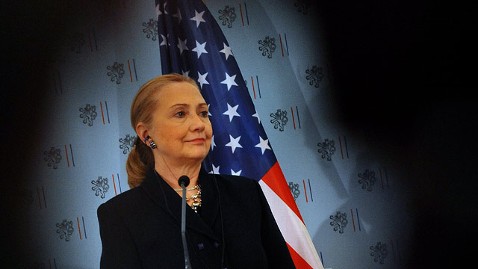CARACAS (Reuters) - Venezuelan President Hugo Chavez is suffering more complications linked to a respiratory infection that hit him after his fourth cancer operation in Cuba, his vice president said in a somber broadcast on Sunday.
Vice President Nicolas Maduro flew to Cuba to visit Chavez in the hospital as supporters' fears grew for the ailing 58-year-old socialist leader, who has not been seen in public nor heard from in three weeks.
Chavez had already suffered unexpected bleeding caused by the six-hour operation on December 11 for an undisclosed form of cancer in his pelvic area. Officials said doctors then had to fight a respiratory infection.
"Just a few minutes ago we were with President Chavez. He greeted us and he himself talked about these complications," Maduro said in the broadcast, adding that the third set of complications arose because of the respiratory infection.
"Thanks to his physical and spiritual strength, Comandante Chavez is confronting this difficult situation."
Maduro, flanked by his wife Attorney-General Cilia Flores, Chavez's daughter Rosa Virginia and her husband, Science Minister Jorge Arreaza, said he would remain in Havana while Chavez's condition evolved.
He said Chavez's condition remained "delicate" - a term he has used since the day after the surgery, when he warned Venezuelans to prepare for difficult times and urged them to keep the president in their prayers.
"We trust that the avalanche of love and solidarity with Comandante Chavez, together with his immense will to live and the care of the best medical specialists, will help our president win this new battle," Maduro said.
A senior government official in Caracas said the New Year's Eve party in the capital's central Plaza Bolivar had been canceled. "Everyone pray for strength for our comandante to overcome this difficult moment," the official, Jacqueline Faria, added on Twitter after making the announcement.
OIL-FINANCED SOCIALISM
Chavez's resignation for health reasons, or his death, would upend politics in the OPEC nation where his personalized brand of oil-financed socialism has made him a hero to the poor but a pariah to critics who call him a dictator.
His condition is being closely watched around Latin America, especially in other nations run by leftist governments, from Cuba to Bolivia, which depend on subsidized fuel shipments and other aid from Venezuela for their fragile economies.
Chavez has not provided details of the cancer that was first diagnosed in June 2011, leading to speculation among Venezuela's 29 million people and criticism from opposition leaders.
Chavez's allies have openly discussed the possibility that he may not be able to return to Venezuela to be inaugurated for his third six-year term as president on the constitutionally mandated date of January 10.
Senior "Chavista" officials have said the people's wishes were made clear when the president was re-elected in October, and that the constitution makes no provision for what happens if a president-elect cannot take office on January 10.
Opposition leaders say any postponement would be just the latest sign that Chavez is not in a fit state to govern and that new elections should be called to choose his replacement. If Chavez had to step down, new elections would be called within 30 days.
Opposition figures believe they have a better shot against Maduro, who was named earlier this month by Chavez as his heir apparent, than against the charismatic president who for 14 years has been nearly invincible at the ballot box.
Any constitutional dispute over succession could lead to a messy transition toward a post-Chavez era in the country that boasts the biggest oil reserves in the world.
Maduro has become the face of the government in Chavez's absence, imitating the president's bombastic style and sharp criticism of the United States and its "imperialist" policies.
In Sunday's broadcast, Maduro said Chavez sent New Year greetings to all Venezuelans, "especially the children, whom he carries in his heart always."
(Additional reporting by Deisy Buitrago and Mario Naranjo; Editng by Kieran Murray and Christopher Wilson)














